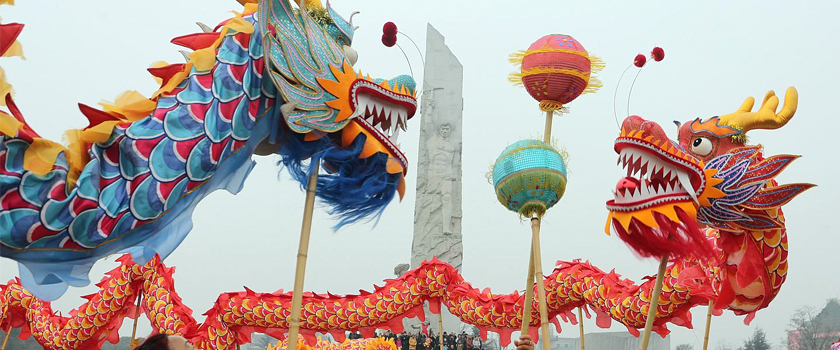Chinese Spring Festival is a festival of joy and harmony. People, near or far, all get together and celebrate this great festival. Some one said with a joke, Spring Festival is trying to spend every penny you earned and saved the whole year.
To some extent, it’s quite true. People buy lots of new clothes, and nice foods and drinks, hold parties, and give lucky money to the elder and children.
There are 3 traditional foods in Spring Festival, they are: Dumplings(Jiao Zi), Rice cake, and Rice Glue Ball (Yuan Xiao, which is often eaten on the 15th of January by the Chinese lunar calendar).
Read Also: Some Skills of Medical Records Translation from Chinese to English
We have a saying “no food is better than jiaozi”. Jiao zi is a favorite traditional Chinese food, essential on the family reunion dinner. Jiao Zi is shaped as the gold ingots to the ancient, thus, it carries a meaning of bringing in money and treasure; besides, Jiao zi has a variety of fillings, such as sugar, earth nuts, jujube, chestnuts, and so forth.
People who eat the jiao zi with sugar symbolized that the coming year will be much sweeter; the one who eat the earth nuts can live a long life, and the one who eat online casino the jujubes will have lovely babies…
Rice cake is anther traditional food of long history. It is made by sticky rice. Firstly, steam the sticky rice, them put them into a mortar, mash it up with wooden hammers. Then, put it onto a chopping board, flatten and shape it as a cake. After it forms and harden, slice it into flakes. It can be cooked in many ways.
Are you looking for Chinese Translation? We are here for your assistance.
Yuan xiao is often eaten on the 15th of January by the Chinese lunar calendar, which is called Yuan xiao Festival. Yuan xiao are round balls made of glutinous rice flour, stuffed with sugar fillings (such as Sesame seeds, earth nuts or fruit fillings), which symbolize reunion.
After all, Spring Festival is a holiday of reunion.
Take a look at how we helped our client by localizing their project for Chinese language. Click here to read the complete case study









